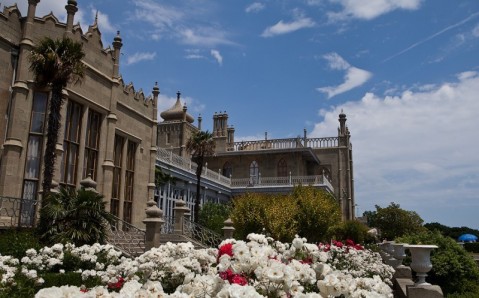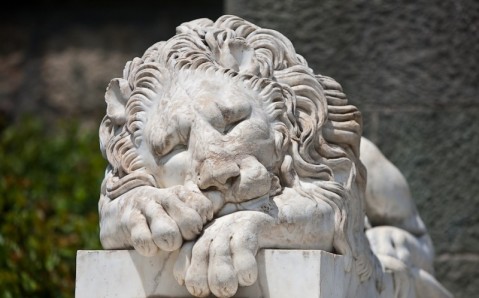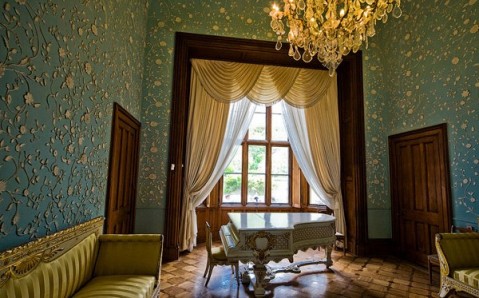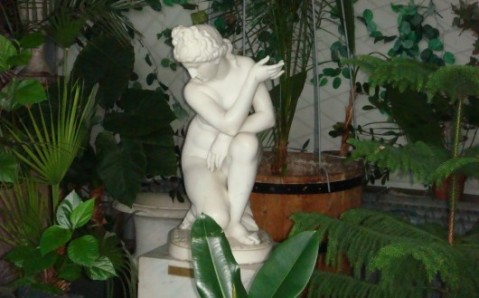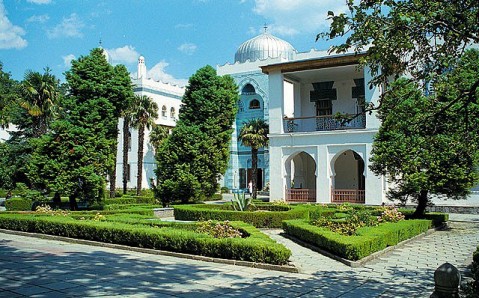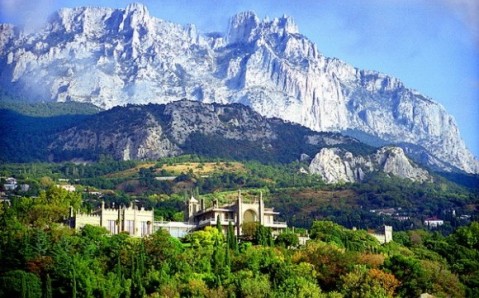Vorontsov Palace
Alupka, Dvortsove Highway, 10
Price: 40 UAH
Working hours: From July 1st until August 30th, every day from 8 a.m. to 2p.m. Rest of the year, 9a.m. – 5 p.m., closed Mondays
Box office hours: с 9.00 до 16.15
This architectural monument to Romanticism is one of the shiniest pearls in the necklace that is Crimea. Created by people in tandem with nature, the Vorontsov Palace has amazed guests with its original look for almost two centuries.
The Palace was build in the middle of the 19th century as summer residence of Russian statesman, Prince Mikhail Vorontsov, who was the governor-general of Russia’s south. It was built from the local stone diabase, famous for its hardness. The palace was designed by Queen Victoria’s court architect Edward Blore, who had already shown his talent in designing London’s Buckingham Palace and Scotland’s Walter Scott Castle.
As planned, the buildings of the palace complex correspond with the mountain peaks. This creates an illusion that the palace’s towers and edges follow the outline of Ai-Petri, harmoniously blending with the landscape. Each of the buildings that make up the architectural ensemble embodies a certain historic style; one can trace the development of the medieval architecture just by looking at the Vorontsov Palace!
The northern facade is created in the Tudor style, based on English Gothic architecture, and is reminiscent of British artistocrats’ menacing castles of the 16th century. And the southern facade, turned to the Black Sea, illustrates the Moresque style, looking festive and lavishly decorated. The Lion Terrace spreads out in front of the palace, from which a grand staircase descents. It is guarded by six white marble lions, which were created by Italian sculptor Bonnani.
The interior of the Vorontsov Palace amazes no less than its exterior. The main rooms have their own styles. They are filled with oak and redwood furniture, are decorated with fanciful carving and molding, and their walls are decorated with works of famous English, French, and Italian artists. But the palace’s main decoration is the beautiful Winter Garden with statues of the Vorontsov family and copies of ancient artists’ sculptures.
The Prince’s descendants remained the owners of the palace until 1917. After the revolution and the establishment of Soviet authority in Crimea, the Vorontsov Palace was turned into a museum, receiving its first visitors in 1921. Its collection consists of furniture, decorations, utensils, books, and paintings. The World War II period was the most difficult in the history of the museum: the Nazis took a lot of valuable works to Germany.
There is one more historic event connected with World War II. Having arrived in Yalta for the 1945 Allies’ conference (USSR, UK and USA), where the destiny of the post-war world was defined, the English delegation lead by Winston Churchill stayed here.
The Vorontsov Park near the palace draws special attention. It is a fine example of landscape art. On a territory of 40 hectares, its creators gathered picturesque alleys and glades, unique lake and waterfall systems, exotic trees and plants that stay green all year round.
Getting here. You can get here from the Yalta transit station on bus №32 or 27.

 Crimea
Crimea
